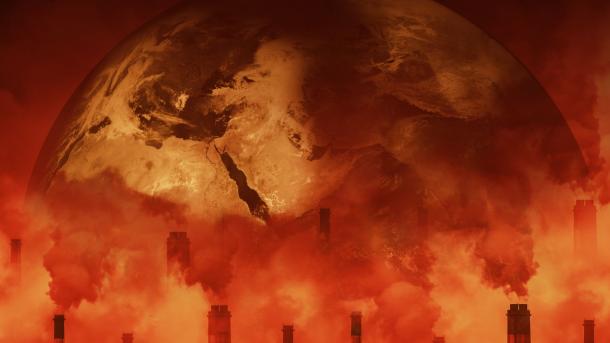
$ 5 m “PropteX” Program aims to support startups, innovation
Paragon Developments has teamed up with Adeer International, PMaestro alongside their German partner, QNTF, to ...

Global averaged concentrations of carbon dioxide (CO2), the most important greenhouse gas, in 2022 were a full 50% above the pre-industrial era for the first time, thus hitting a new record.
The CO2 concentrations continued to grow in 2023, according to a new report from the World Meteorological Organization (WMO).
The rate of growth in CO2 concentrations was slightly lower than the previous year and the average for the decade, according to WMO’s Greenhouse Gas Bulletin. But it said this was most likely due to natural, short-term variations in the carbon cycle and that new emissions as a result of industrial activities continued to rise.
Methane concentrations also grew, and levels of nitrous oxide, the third main gas, saw the highest year-on-year increase on record from 2021 to 2022, according to the Greenhouse Bulletin, which is published to inform the United Nations Climate Change negotiations, or COP28, in Dubai.
“Despite decades of warnings from the scientific community, thousands of pages of reports and dozens of climate conferences, we are still heading in the wrong direction,” said WMO Secretary-General Prof. Petteri Taalas.
“The current level of greenhouse gas concentrations puts us on the pathway of an increase in temperatures well above the Paris Agreement targets by the end of this century. This will be accompanied by more extreme weather, including intense heat and rainfall, ice melt, sea-level rise and ocean heat and acidification. The socioeconomic and environmental costs will soar.. We must reduce the consumption of fossil fuels as a matter of urgency.,” said Prof. Taalas.
Just under half of CO2 emissions remain in the atmosphere. Just over one quarter are absorbed by the ocean and just under 30% by land ecosystems like forests – although there is considerable year-to-year variability in this. As long as emissions continue, CO2 will continue accumulating in the atmosphere leading to global temperature rise. Given the long life of CO2, the temperature level already observed will persist for several decades even if emissions are rapidly reduced to net zero.
The last time the Earth experienced a comparable concentration of CO2 was 3-5 million years ago, when the temperature was 2-3°C warmer and sea level was 10-20 meters higher than now.
“There is no magic wand to remove the excess carbon dioxide from the atmosphere. But we have the tools to strengthen our understanding of the drivers of climate change through WMO’s new Global Greenhouse Gas Watch. This will greatly improve sustained observations and monitoring to support more ambitious climate goals,” said Prof. Taalas.
Paragon Developments has teamed up with Adeer International, PMaestro alongside their German partner, QNTF, to ...
Crédit Agricole Egypt Foundation for Development and Schneider Electric have successfully concluded the Second Phase ...
The European Commission (EC) has decided to register a European Citizens’ Initiative (ECI) entitled ‘Save ...


اترك تعليقا